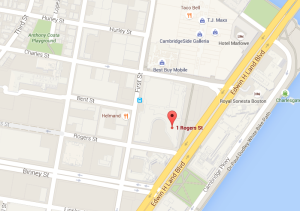Joint meeting between IEEE Computer Society, GBC/ACM and BostonCHI
- Jared M. Spool, Founding Principal, User Interface Engineering
- Thursday, January 21, 2016 at 6:30 PM
- At Verizon Labs, 60 Sylvan Rd, Waltham, MA
Abstract
For the longest time, making a great experience for the user was a luxury item in a business’s strategy. It was a nice-to-have, after identifying a customer need and fulfilling it with a working product. The product had to work and it had to ship. If it was a great experience, well all the better. Times have changed. The cost of creating and delivering a product is no longer a barrier to entry. Quality is no longer a differentiator. What’s left? The experience of using the product. If you’re going to be truly competitive in today’s markets, your products and services better have a great experience. To do that, a fundamental shift has to occur inside your organization. It’s no longer acceptable to ship a product with a poor experience or to deliver poor customer service. Every part of the organization has to be infused with an understanding of great user experience. Your organization has to cross the UX Tipping Point.
Bio
Jared M. Spool is the founder of User Interface Engineering and a co-founder of Center Centre. If you’ve ever seen Jared speak about user experience design, you know that he’s probably the most effective and knowledgeable communicator on the subject today. He’s been working in the field of usability and experience design since 1978, before the term “usability” was ever associated with computers.
Jared spends his time working with the research teams at User Interface Engineering, helps clients understand how to solve their design problems, explains to reporters and industry analysts what the current state of design is all about, and is a top-rated speaker at more than 20 conferences every year. With Dr. Leslie Jensen-Inman, he is starting Center Centre, a new school in Chattanooga, TN to create the next generation of industry-ready UX Designers. In 2014, the school, under the nickname of the Unicorn Institute, launched a Kickstarter project that successfully raised more that 600% of its initial goal. He is also the conference chair and keynote speaker at the annual UI Conference and UX Immersion Conference, and manages to squeeze in a fair amount of writing time. He is author of the book, Web Usability: A Designer’s Guide and co-author of Web Anatomy: Interaction Design Frameworks that Work. You can find his writing at uie.com and follow his adventures on the twitters at @jmspool.
Evening Schedule
6:30 – 7:00 Networking
7:00 – 8:30 Meeting
8:30 – 9:00 CHI Dessert and more networking!
Sponsors
Vitamin T is sponsoring pizza and dessert.
Getting to the Event
Verizon Labs, 60 Sylvan Rd, Waltham, MA



